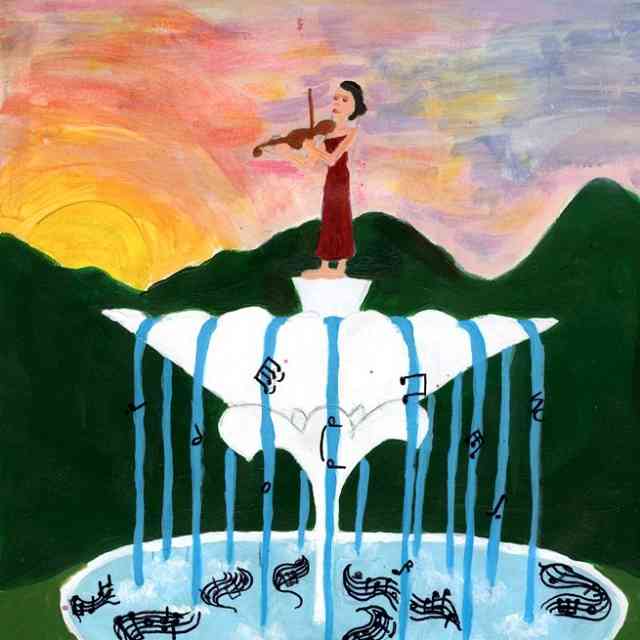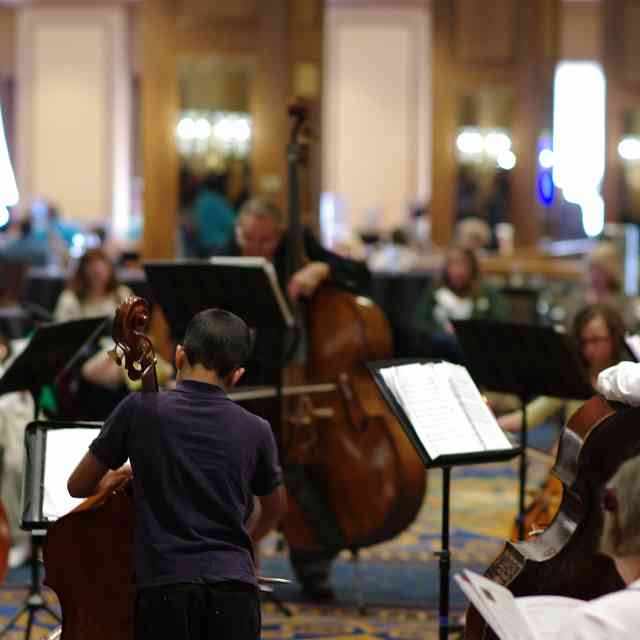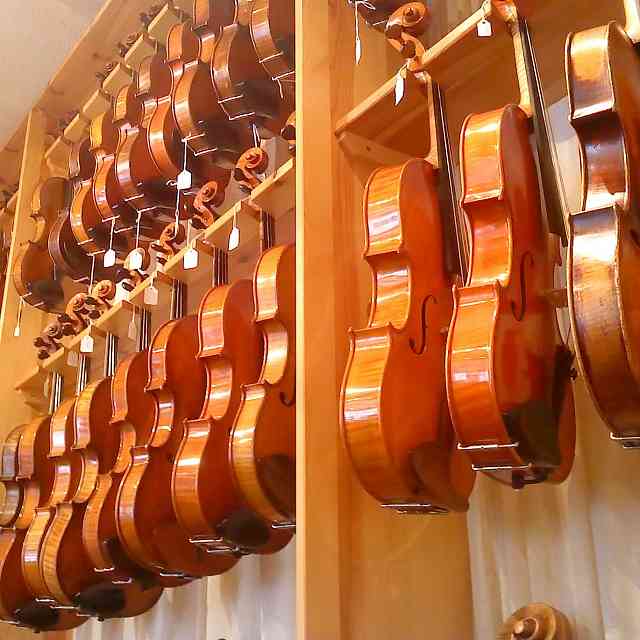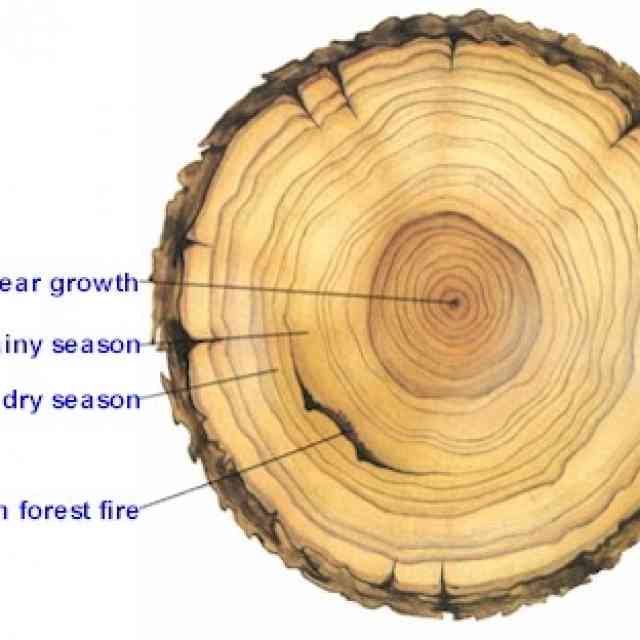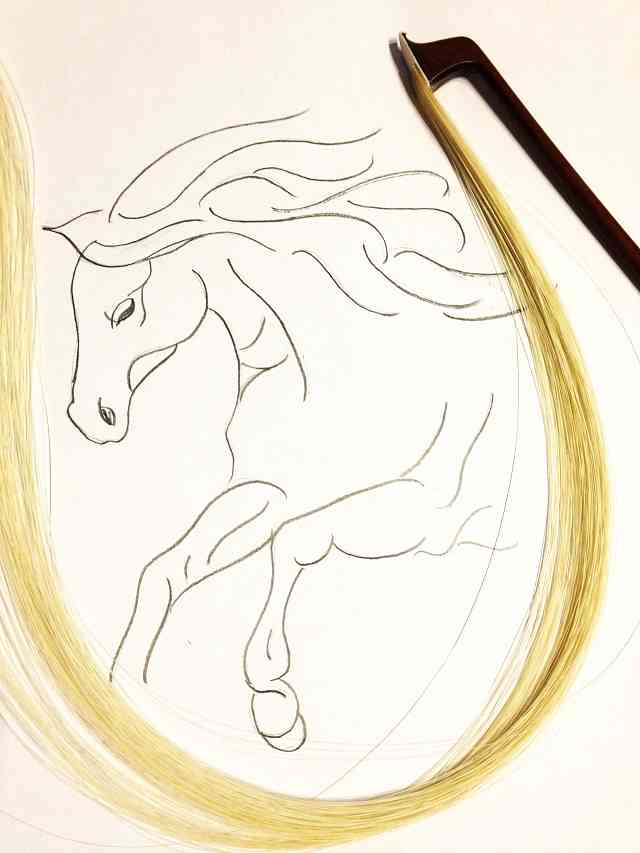
Horsehair Bow
Fourth in an Educational Series sponsored by Robertson and Sons Violin Shop
Have you ever imagined what the horse that donated its tail for your bow hair looks like? Where does it live? Is it a mare or a stallion? Here are some interesting facts that might help you get to know your horse:
-
Horses that produce hair which meets the standards for use on bows live in very cold climates. The frigid weather causes the hair to be thicker and stronger. Most bow hair comes from Mongolia, Siberia, Canada, Argentina, and Australia.
-
Most bow hair comes from natural blonds! Darker hair can be bleached, but it weakens the hair. Some cellists and bassists prefer brown or black hair because it tends to be coarser and create more grip.
-
Odds are that your bow hair came from a stallion, so you may want to give your horse a boy’s name!
-
There are different qualities of bow hair available. Hair can range from $160 to $400 per pound. The price is determined by characteristics of the hair as well as how many times the hair has been “picked.” Picking is performed by individuals who cull out the short, squiggly, and otherwise irregular hairs. Expensive hair is very consistent in appearance.
-
Have you ever wondered how many hairs are in your bow? Approximately 150 hairs are required for a violin bow. Viola, cello, and bass bows require incrementally more hairs with the bass bow using in excess of 300 hairs.
-
When horsehair is examined under a microscope, the surface of the hair looks very irregular with many crevices and protrusions. The rosin settles in the grooves and valleys of the hair shaft and provides traction for the hair on the string. Over time, the hair wears smooth and tone production wanes. Regardless of how much daily use a bow gets, it should be rehaired at least once per year. Professional players and avid practicers might prefer to get their bows rehaired two or three times per year.
-
Nine out of ten horses surveyed prefer their tails to be clean. Therefore, DON’T TOUCH THE HORSEHAIR! Dirt and grime on the hair make it impossible for the hair to hold rosin. Please don’t ever attempt to shampoo your bow hair! If the hair gets dirty, take it to an experienced professional to have it rehaired.
-
Breakage is another reason a bow might need to be rehaired. Breakage can occur during vigorous playing or when hairs get caught on other objects. It’s best to carefully cut broken hairs where they are attached at the frog or the tip. Yanking the broken hairs could possibly pull out additional hairs. If you notice that multiple hairs are mysteriously broken when you open your case, your case may have been invaded by carpet weevils. The larvae of this insidious creature dine on natural fibers and they find horsehair to be a delicacy. If you find evidence of an infestation, remove your violin from the case, clean your case thoroughly, and leave your case outside in direct sunlight for several hours. In order to dissuade the pesky creatures from taking up residence in your case, a container (with holes) filled with cedar chips is an effective deterrent.
-
There is a plastic alternative to horsehair available, but it is a poor substitute for the real thing, even at the earliest stages of study.
At Robertson and Sons Violin Shop, Bryan Robertson daily bends over his workbench rehairing and restoring bows as he has done since he began serving customers in 1985. He began learning the trade long before that under the careful guidance of his father, Don Robertson. As a young teen, every Saturday after youth symphony rehearsal (he plays the double bass), Bryan would head for the shop to hone his skills. Now he rehairs somewhere between 2,000 and 2,500 bows per year! His clientele consist of performers, pedagogues, and students from across the country. They regularly ship their bows to Bryan for rehair and restoration because they trust him to use the best hair and to install it with a practiced and steady hand. His customers know that bow rehairing is a highly refined skill and a bow can easily be damaged by someone without Bryan’s training and experience.
Over the years, Bryan has accumulated a vast body of knowledge regarding bows, bow makers, and of course, horsehair. His goal is to make each bow the best instrument for tone production that it can be. He takes great pride in his work. In the world of bows, Bryan is a virtuoso! He would be pleased to serve all of your bow needs. Robertson and Sons Violin Shop also has a wide selection of bows for all stringed instruments in every size and price range.
Now that you’re an expert on horsehair, do you see your bow in a new light? In your mind’s eye, can you imagine the strong, graceful animal that accompanies you with each stroke of the bow? Will the knowledge that your horse lived in an exotic far-away land inspire new richness in your tone? Perhaps , at least, you will have a new appreciation for the partnership between man and beast to create the beauty of music!
